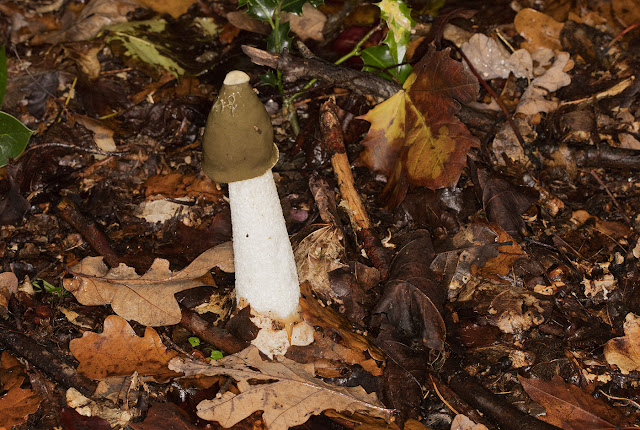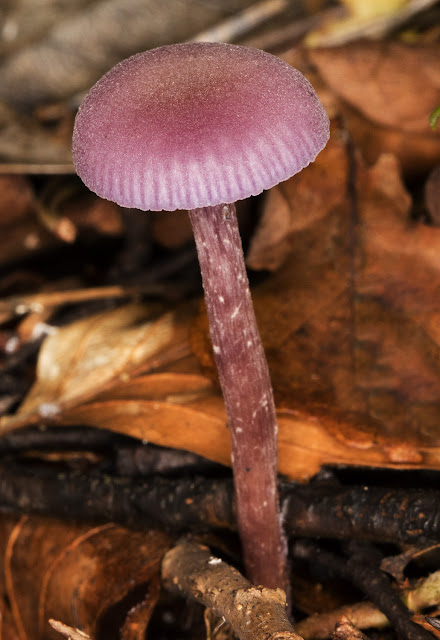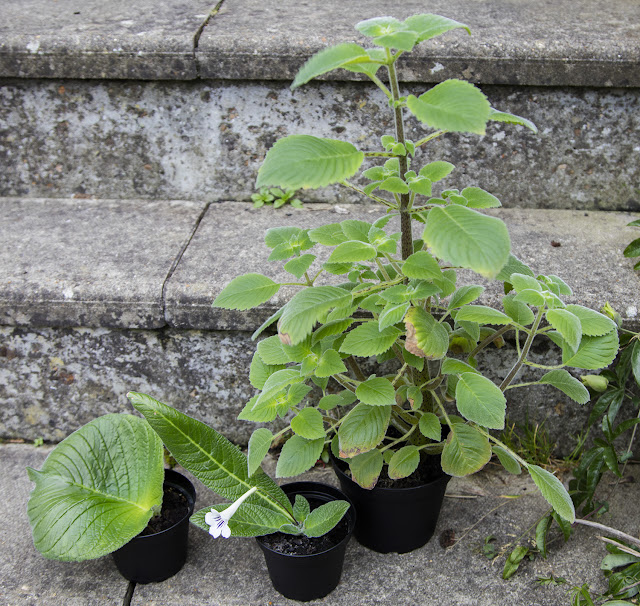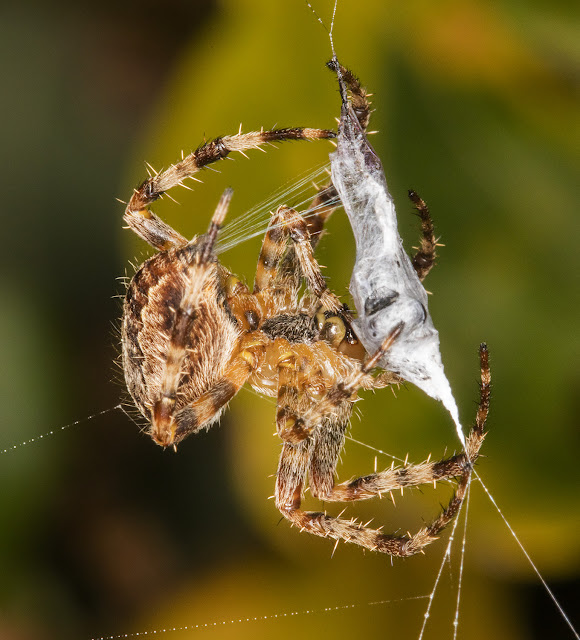 |
| Stinkhorn, Phallus impudicus. Hayes Common, 28 October 2015. |
Some fungi are smelly. It's obvious from their name that stinkhorns are prominent among them.
This one is called Phallus impudicus, the unashamed penis. You can get away with a name like that if you use Latin. In fact, the word phallus comes originally from Greek, which makes it even more classical and therefore less rude. Unlike the actual fungus.
This is our commonest stinkhorn, and I came across this lovely specimen on Hayes Common today (as I write). Stinkhorns emerge from round objects known as eggs, and quickly reach their full size, with a brown cap that smells of excrement. You can just see the top of the egg at the base of this one.
The brown stuff is called gleba, and contains the spores. It attracts flies ..
 |
| Various flies on a Stinkhorn, Phallus impudicus. Hayes Common, 28 October 2015. |
Here you can see a dungfly, a flesh fly, a couple of housefly relatives and some smaller flies with red eyes that I don't recognise. It's clearly popular. This specimen is quite fresh. The gleba will be all gone in a day or so, leaving a white skeleton which you can see part of near the top. The flies will distribute the spores on their legs. Here's a photo of a stripped one:
 |
| Phallus impudicus, Stinkhorn, stripped of its gleba. Keston Common with the Orpington Field Club, 19 October 2013. |
I have a photo of a similar specimen from Spring Park, West Wickham, but it is being held in the hand of someone who would rather not see that photo on line.
 |
| Dog Stinkhorn, Mutinus caninus. West Wickham Common, 27 October 2015. |
Only the day before I saw the beauty in the first photo, I had seen another stinkhorn species on the common next door. This Dog Stinkhorn has fallen over, and I was actually thinking about it and wishing I could have seen it while it was still upright when I came across the fresh P. impudicus.
You can see that the two are very similar in form, but the Dog Stinkhorn is slimmer, and usually yellower.
 |
| Dog Stinkhorn, Mutinus caninus, with two fresh eggs. Near Ightham Mote, 4 October 2015. |
Here's a rather mangled Dog Stinkhorn I saw when out with the Orpington Field Club near Ightham Mote a couple of weeks ago. You can see the empty egg it grew from on the right, and there are also two developing eggs in this scene. This also gives you a good idea of how soft and gooey the gleba is. If you see a stinkhorn, I suggest you should not touch the smelly gleba. Just have a cautious sniff and then step back.
Here's one from High Elms in 2013, still fresh and upright:
 |
| Mutinus caninus, Dog Stinkhorn. Orpington Field Club outing to High Elms Country Park, 12 October 2013. |
I have found stinkhorns before by smelling them first, then looking around. You might think a thoughtless dog owner has just passed, or paused, at that spot, and indeed it might be so, but on the other hand you might be lucky!
Stinkhorns are always an interesting find.























